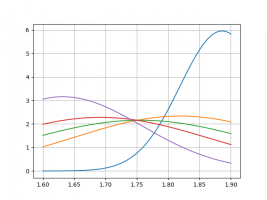My dear feline,
You know that no poster ever reads the guidelines, which say to post the complete and exact statement of the problem. Posters infinitely prefer to post their own interpretation of the problem, which interpretation often is the source of the poster’s confusion. For example, I suspect the problem says “approximately normal” or some such similar qualification that takes us out of the realm of integrals completely.
Of course, it may be a badly worded problem that posits people with negative heights (presumably living in Australia, where gravity is backwards and things fall northward).
I suggest you have a bowl of cream flavored with catnip as alcohol is bad for cats. When I read questions like this, I head to the liquor cabinet as catnip has never done much for me.

